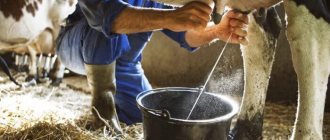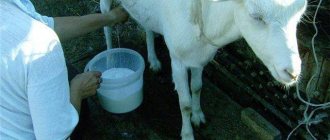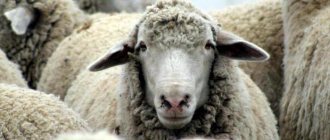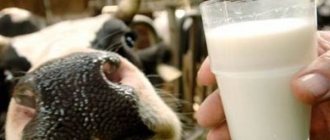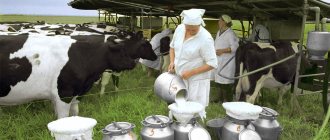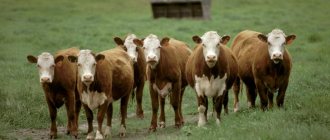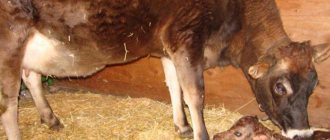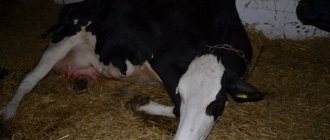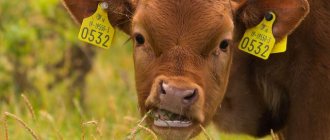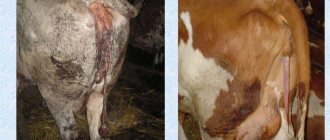Cow's milk must be of high quality in two cases. In the first, it is used for the family table. In the second - for production purposes. But any defects in the nutrient fluid lead to decreased demand and material losses. The first reason for discarding a product is considered to be a change in taste for the worse. This happens if the milk begins to taste bitter. It is worth understanding the reasons for this phenomenon in order to help the cow in time and save precious milk.
Domestic cow nutrition
Before we break down the diet of female cattle, it is worth mentioning the natural physiological cause. It is characteristic of most animals before calving.
Bitterness appears in milk a month or two before birth.
This is due to hormonal changes in the body, the growth of casein and leukocytes. The time when a cow stops being milked is called the dry period. Burenka significantly reduces milk yield and the milk changes taste.
As a rule, livestock farmers are ready for such a change. This sign is sometimes used to determine the beginning of preparation for childbirth. It leaves after calving without the intervention of livestock farmers in a few days.
But there are various reasons why a cow’s milk tastes bitter, not just before starting? Among them, feed occupies an important niche:
- Poor quality food leads to increased stomach acidity. Animals often lack sugars, especially in winter;
- Herbs, flowers and vegetables eaten by the cow for several days will also add bitterness to the drink. The brightest taste will be given by onions, garlic, rowan, wormwood, yarrow, dill, caraway seeds, field mustard, potatoes, rutabaga and others;
- putrid oat and barley straw;
- yeast, colostrum supplement.
Sometimes the cow begins to actively eat the ground, bites off the bark of a tree or licks the walls of houses. Then she experiences a lack of minerals. The bitterness in milk is due to the lack of cobalt.
The main causes of bitterness in milk and how to eliminate them
The quality of the product, the presence or absence of bitterness in it is determined by several factors:
- the state of health of the cow;
- the nature of the food;
- conditions of detention.
Diseases
Bitter taste can be caused by such cattle ailments as:
- mastitis;
- chronic ketosis;
- various infections;
- liver pathologies;
- pathology of the gallbladder.
Find out how to recognize a particular ailment in a cow and what to do in each specific case.
Liver
Changes in taste are often a consequence of liver pathologies. This organ of the animal is affected by viral infections, microbes, poisons and helminths. During the hot season, when harmful microorganisms actively multiply, the threat of developing leptospirosis (liver damage due to intoxication) increases. And hepatitis in cows can be caused by malnutrition and various abnormalities of the circulatory system.
Liver damage in cattle can be recognized by the following symptoms:
- vomit;
- severe diarrhea;
- increased body temperature;
- decrease in milk production and deterioration in its quality.
Did you know? While serving a prison sentence, V.I. Lenin wrote letters to freedom using milk. When the former liquid dried up, it became invisible. And when the paper was heated over a fire, the text could be easily read.
This group of diseases not only spoils the taste of milk, but also threatens the life of the cow. Diagnosis will require a series of laboratory tests. If treatment is started early, the animal has a chance to make a full recovery. Therapy is carried out under the supervision of a veterinarian.
Bile
Among congenital deformities in cows, curvature of the gallbladder or too narrow bile ducts are often diagnosed. The abnormal structure of these organs causes chronic cholestasis (accumulation of bile in the body), which, in turn, increases the risk of gallstone formation. Such problems negatively affect the quality of dairy products - milk acquires a mustard color and a bitter taste.
We recommend reading: What plants grow in the Far East:
However, these pathologies are almost always asymptomatic. In rare cases, they may make themselves known through high body temperature, diarrhea, jaundice or dark urine.
You should contact a specialist who, based on the degree of neglect of the disease, will prescribe all the medications necessary for recovery. Medicines and special diets will help eliminate bile stagnation. But in the case of congenital pathologies, it is not always possible to completely eliminate the bitter taste of milk.
Mastitis
Udder mastitis is a very common cause of bitter milk. This disease is provoked by genital infections, udder injuries, neglect of the rules of pumping and violation of the conditions of keeping the animal. Milk from cows suffering from mastitis is unfit for consumption and, therefore, should not be used for the production of fermented milk products.
Udder mastitis In veterinary practice, chronic mastitis is more often diagnosed than acute inflammation. A sign of the acute form is swelling of the udder followed by gangrene. In addition, when expressing, purulent clots and blood can be detected. Acute mastitis in cattle is life-threatening and must be treated immediately.
Signs of chronic mastitis:
- heterogeneous low-fat milk containing clots;
- bitter taste;
- presence of seals in the udder.
A chronic disease can also occur without obvious symptoms - you will only notice a change in the taste of the product. If you suspect a chronic illness, you should have your milk tested. The development of mastitis is effectively prevented by the introduction of special drugs into the nipple canal (for example, Bayoclox or Amoclox). Therapeutic measures should be carried out after the last expression of milk.
Helminth infection
It is also possible that the domestic cow became infected with helminths. Bitterness results from the presence of helminths in the liver (fascioliasis). The disease affects the entire body.
Fascioliasis The cow looks depressed, suffers from high fever (up to 41 degrees), loss of appetite, and vomiting. When palpated, you can find that the liver is enlarged and the abdominal muscles are tense.
Most of these symptoms are more common in the summer heat. In winter, the only clear sign of worm infestation is the bitter taste of milk. The thick top layer of the product is especially unpleasantly bitter. If you notice symptoms of infection, submit samples of manure for analysis. It is best to do this in December.
Important! Even if the product does not taste bitter, it is important to regularly (twice a year) test the manure of individual cows for preventive purposes - before grazing (from April to May) and in late autumn.
Cattle
should also If laboratory studies have shown that a bitter product is suitable for consumption, then the question of how to remove the bitterness becomes relevant. It needs to be heated to 40 degrees and cooled - the bitterness should disappear.
Content Features
The quality of milk is directly affected by the conditions in which cows are kept. At the same time, caring for cattle in the warm and cold seasons is fundamentally different. Beginning farmers are often interested in what exactly they need to protect their cows from so that they do not become infected with bacteria.
We recommend reading: Biewer York dog. Description, features, price and care of the Biewer York breed. The article will tell you in detail about the Biewer York breed, proper care of the dog and its character.
During the hot season
During the summer, cows spend much more time on pasture, so the problem of maintenance at this time is not so acute. However, land can become a source of infection with invasive diseases. Lowlands and swampy meadows are especially dangerous. During warmer months, cows can become infected with leptospirosis through water.
Did you know? Poppaea, Nero's second wife, took baths every day from the milk of 500 donkeys. Poppaea's contemporaries claimed that her skin looked very soft and smooth.
Therefore, summer walking should begin with preparing the area. Drain low-lying wet areas using drainage. Graze dairy cows away from rivers and lakes, and prepare a stationary point for watering. The transition to summer maintenance should be gradual. During the first week, grazing should last no longer than 2–3 hours.
In winter time
A bitter aftertaste occurs mainly in winter. This is due to the fact that at low temperatures, bacteria that cause bitterness develop faster than bacteria that lead to souring.
The insulated room must be well ventilated, but in any case, livestock should not be kept indoors all winter. Set up a walking area near the barn. It will have to be systematically cleaned of snow and manure. Place a haystack in the pasture so that the cow is supplied with roughage.
Hygiene
Bacteria that cause bitterness can enter the cow's body through dust in the barn. And through unwashed dishes used during milking, bacteria enter directly into the milk. The container must be sterile. In addition, do not forget to wash the udder with clean boiled water and wipe with a clean cloth. The first streams must be decanted into a separate container.
This is due to the fact that they contain a large amount of reductase, a substance that imparts bitterness. The barn must be systematically cleaned. Bedding should always be clean and dry, as bacteria thrive in damp conditions. Today, the technology of keeping livestock on deep litter is increasingly being practiced. In this case, manure is removed once a year (in spring), but only with frequent ventilation.
Nutrition
What cattle are fed significantly affects the taste and smell of milk. It should be remembered that some components of the feed can pass from the body into milk.
Important! Malnutrition, especially in winter, can cause milk to lack sugar and organic matter. In cold weather, it is recommended to increase the portions of food and also add a little granulated sugar to it. In addition, in cold weather, the cow needs to be injected with vitamins subcutaneously.
Eating large portions leads to a bitter taste:
- alfalfa;
- raw potatoes;
- turnips;
- wormwood;
- lupine;
- wild chamomile;
- acorns;
- chestnuts
We recommend reading: What can you plant carrots next to?
A number of plants growing in pastures can give milk a bitter taste:
- onion;
- garlic;
- tarragon;
- chestnut leaves;
- thistle.
The fact of feeding animals with various types of silage, be it beet leaves, potatoes or corn, has a significant impact on the characteristics of milk and its usefulness in the production of fermented milk products.
Why does milk taste bitter after calving?
Unpleasant milk taste is common in pregnant cows. However, the threshold for the onset of deterioration of taste properties is individual for each individual: usually this occurs after seven pregnancies and two months before the upcoming calving. The cow begins to prepare to feed her calf.
During this period, it is not advisable for a person to consume liquid with bitterness, but this product is allowed to be given to pets. During pregnancy and after calving, it is necessary to carefully monitor the feeding of the cow. After calving, it is important to check for mastitis.
What to do about it
It is possible to solve the problem of bitter milk, unless the animal has a congenital problem in the body.
If there is a lack of sugars or vitamins, add a little sugar to the cow’s feed, increase the diet and inject vitamins intravenously. For high acidity, a lick with soda is recommended (a teaspoon per bucket of food).
It happens that the milk turns brown several months before calving - in this case, the heifer must be started, that is, milking should be stopped and she should be allowed to prepare for childbirth. In such cases, bitterness does not appear immediately, but after a few hours.
For fascioliasis, the animal is treated with special medications and bile is drained on the advice of a veterinarian. This disease can be judged by the bitter taste of sour cream obtained from milk. Finally, inflammation of the appendages or colds should also be treated under the supervision of a doctor.
How to store homemade milk without bitterness
Milk is a perishable product, so storing it in open containers and without refrigeration is prohibited. In heat and air, the protein in milk quickly oxidizes.
The veterinary drugs used to treat the cow easily penetrate into the milk, as well as bitter herbs, which can also give the finished product bitterness. If homemade milk was stored in dirty or rusty containers, the taste will be bitter or have a metallic taste.
You can drink fresh milk from a cow only after boiling it, otherwise you can be seriously poisoned. During production, various stabilizers are added to dairy products to prevent souring, which is why “store-bought” milk lasts longer. That's the whole answer why homemade milk tastes bitter.
Share this information on social networks:
Diseases and bitter milk
The health of the cow and the taste of the milked liquid are directly dependent on each other. When certain diseases occur in an animal, not only the characteristics of the milk change.
Sometimes milk yield is greatly reduced or it disappears completely.
Bitter milk in a cow appears as a result of the following pathologies:
- liver disease affects changes in milk quality. When there is not enough carbohydrate in the diet, glycogen in the liver breaks down. As a result, ketone bodies are created and released into milk. This is facilitated by bending of the gallbladder and stagnation of bile. And the liver is affected by fungi, toxins, bacteria;
- inflammation of the udder leads to an increase in the number of microorganisms that lead to spoilage of the product. Often, a cow’s milk becomes bitter due to the chronic course of the disease;
- Metabolic disorders are considered serious diseases. Ketosis promotes the appearance of acetone and acetic acid in milk, and these are bitterness companions;
- the taste of milk changes in this direction during the cow’s estrus weeks or hunting;
- Milk often tastes bitter when infected with leptospirosis. The infection can even lead to death. This taste of milk often becomes the only sign of a sluggish course of the disease;
- Parasite infestations should be treated without delay. Fascioliasis affects the digestive system, internal organs, not to mention changes in the taste of milk;
- animal cold and inflammation of the appendages.
Cow's milk tastes bitter in many cases when the animal consumes antibiotics. To combat these main diseases, one has to resort to intramuscular or subcutaneous injections.
Hygiene in housing and milking
The cow gives milk every day, which is consumed by humans. Changes in the main properties of milk are affected by livestock maintenance.
There are factors that create the taste of milk:
- regular change of bedding;
- cleaning cow premises;
- carrying out disinfection;
- washing hands and udders before milking;
- clean dishes and clothes.
Dust from the ceiling or particles of manure from an animal's tail can easily end up in the milk bucket. Perhaps they will not immediately lead to damage to the product. But the taste of bitterness and unpleasant odors will leave no doubt as to whether such a drink can be drunk. The problem often exists during the winter when the cow spends a lot of time in the stall.
A cow's milk is often bitter due to the mixing of the first streams with the main volume. The enzyme and microbes found there in excess quickly break down fats. As a result, a corresponding bitter taste is formed. Therefore, it is better to milk the first drops into a separate bowl.
More on the topic: How to help a cow if she has broken her horn?
Poor nutrition
What a cow has eaten throughout the day directly affects the taste of the milk produced. There are many plants that, when ingested, accumulate in the mammary glands and are then excreted in milk. This may cause a bitter taste.
If cattle eat a lot of cruciferous plants, alkaloids can accumulate. Eating green onions will affect the bitterness of the milk.
If an animal eats wormwood in the fall, the milk will be bitter, but in the spring they eat this herb with pleasure. Avran, garlic and tansy can also affect the taste of milk. In addition to the above, bitterness can occur if the food was incorrectly selected and if the diet is monotonous.
Rotten or spoiled grains change the taste of milk, and this also applies to potatoes, carrots and rutabaga. If you consume them in large quantities, bitterness will be present in the milk. If the bitterness was due to the food, then it should be excluded for a while and later replaced with another.
Other reasons why homemade milk is bitter
Another common cause of bitterness in homemade milk is mastitis, which also gives the milk a slight saltiness. Mastitis in domestic cows occurs due to the presence of blood, pus, and fibrin flakes in the milk. If a cow suffers from mastitis, its milk cannot be used for food purposes. The animal needs to be treated urgently, since in an advanced form of the disease the cow may die altogether. Until mastitis is cured, you will not be able to get good milk.
If the barn is unsanitary and there are no basic hygiene procedures before milking, the milk will also be tasteless. A “dirty” product contaminated with bacteria almost immediately goes rancid and begins to smell bad.
If there is a metabolic disorder in the cow's body and a lack of cobalt, as well as other vital microelements, the milk becomes bitter.
Read: Why cream curdles when stewing: how to fix it
Also, a characteristic taste occurs when feeding spoiled food or when the animal has congenital developmental anomalies. If bitterness in milk appears suddenly, although the taste was normal before, the livestock breeder is advised to urgently call a veterinarian to determine the cause of the strange taste of the dairy product.
What else do you need to know
Small farms do not have an automatic apparatus for receiving and processing milk. If initially the milk tasted good, then it begins to spoil due to the following reasons:
- exposure to direct sunlight - most often occurs when milking is done manually in a bucket;
- improper storage conditions when equipment fails and the temperature reaches more than + 25 degrees;
- The milk pan is made of copper or metal utensils.
Often, a bitter taste appears due to microorganisms that actively multiply in dairy products. This can occur due to violation of storage conditions, but most often occurs due to non-compliance with sanitary standards during the milking process, namely:
- untimely cleaning of the premises;
- the udder and nipples are washed with one towel before placing milk glasses before milking;
- milking the first streams of milk, which contain somatic cells and microbes in large quantities, into one bowl;
- healthy and sick animals are milked in the same room;
- presence of milk residues in the container for the next milking.
If all of the above problems are addressed in a timely manner, the taste of dairy products will remain at the proper level at any time of the year.
What else could be wrong?
Veterinarians pay attention: bitter milk indicates problems with metabolic processes in the animal’s body. This often indicates a lack of microelements and malnutrition. Taste qualities strongly depend on the concentration of cobalt in the body of cattle. In some cases, based on milk bitterness, studies are carried out to identify abnormalities in the development of internal organs and possible problems of the whole organism.
If the milk used to be of high quality, but its taste suddenly changed, and this is not related to pasture or the expectation of offspring, you need to consult a doctor to prevent possible complications and loss of livestock. This will help determine in each specific case why the milk tastes bitter when it sits.
Factors causing milk defects include the physiological state of lactating animals, general disease of the body or mammary gland, non-compliance with the conditions of keeping and feeding livestock, unsatisfactory condition of livestock buildings and pastures, the use of poor-quality feed, irrational use of medications, violation of the technology of primary milk processing and some other reasons.
Defects in the color of milk can be of bacterial and feed origin, and are also observed when using certain medications to treat cows, infectious diseases, and udder injuries. Blue and blue coloring occurs when pigmenting microorganisms multiply, when animals eat forest grasses with blue pigment, during mastitis, mammary tuberculosis, diluting milk with water, skimming fat, storing milk in galvanized containers; excessive yellow coloring is caused by microorganisms that produce yellow pigment, purulent (streptococcal) inflammation of the mammary gland, udder tuberculosis, an admixture of colostrum, food (bison, bedstraw, carrots), medications (tetracycline); pinkish-reddish coloring is observed when the rules of machine milking are violated, feeding a large number of buttercups, euphorbia plants and horsetails, the development of pigment-forming bacteria, piroplasmosis, and udder injuries.
Defects in the consistency of milk can occur due to animal diseases, the proliferation of microorganisms in milk and the feeding of certain feeds. The mucous consistency of milk is caused by mucus-forming races of lactic acid and putrefactive bacteria, an admixture of colostrum, some forms of mastitis, and foot-and-mouth disease; excessive foaming - bacteria from the E. coli group, yeast, butyric acid microorganisms; Watery milk occurs with tuberculosis, catarrhal mastitis, excess stillage, beets and other watery feeds in the feed ration, during estrus, when milk is diluted with water, and frozen milk is thawed.
Defects in the technological properties of milk are determined by the physiological state of the body of lactating animals, the use of low-quality feed, and microbiological factors. Premature souring of milk is observed at the end of the dry period, when feeding marsh grass, sour and moldy food, with the accelerated development of lactic acid bacteria, Escherichia coli bacteria, staphylococci, enterococci and micrococci, dysfunction of the gastrointestinal tract, mastitis and overheating of the animal’s body. A slowdown in the souring of milk is observed when feeding mint, inhibiting the microflora that forms lactic acid, using antibiotics, disinfectants and preservatives, and with the development of proteolytic microflora.
Rennet coagulation of milk occurs without souring soon after milking cows or with low heating; The cause of this defect is hereditary factors, feeding grass from waterlogged pastures, the development of certain types of microorganisms, streptococcal mastitis.
Odor defects are observed when the sanitary and hygienic conditions for obtaining milk are violated, when it is improperly stored, and when microflora develops. Ammonia odor occurs when microorganisms from the Escherichia coli group develop in milk; cabbage - when there is an excess of cabbage in the feed ration; medicinal - from creolin, turpentine, phenol, tar, iodoform; butyric acid - with butyric acid fermentation; yeast and alcohol - as a result of contamination of milk with various impurities; fish - when grazing animals on flooded meadows with remains of crustaceans, feeding fish meal, drinking water with algae to cows, storing milk in metal containers (hydrolysis of lecithin with the formation of trimethylamine), the development of certain microorganisms. Putrid odor is caused by putrefactive microorganisms; musty - occurs when aerobic microorganisms multiply in tightly closed, non-refrigerated milk.
Taste defects (milk tastes) are of feed, bacterial and physico-chemical origin due to violation of sanitary rules for storing milk. A fishy taste appears in milk when it is stored with fish, when cows are fed fishmeal, or when they drink water with algae; bitter - when animals eat wormwood, onions, field mustard, moldy oat and barley straw, rotten red beets, rutabaga, potatoes, with the development of putrefactive bacteria, hay and potato bacillus, yeast, in old cows, admixtures of colostrum and medicinal substances, milk storage in dirty dishes.
The rancid taste of milk is observed when exposed to direct sunlight, high air temperatures, grazing cows on swampy pastures, when storing milk in untinned containers, as well as during the development of microorganisms that cause lipolysis and butyric acid fermentation, the growth of certain types of E. coli and yeast.
The salty taste of milk is observed in old cows, in the presence of colostrum, mastitis and mammary tuberculosis; soapy - when storing uncooled freshly milked milk in closed flasks, neutralizing milk with soda, mammary tuberculosis, grazing in meadows with horsetail.
Milk acquires a turnip and radish flavor when cows are over-fed with root crops and cruciferous tops (turnips, turnips, rutabaga, radishes), and when they graze over stubble covered with colza, field mustard, and wild radish; garlic-onion - when animals eat wild onions and garlic in pastures; beet - with an excess of beets in the feed ration, the proliferation of fluorescent microorganisms; grassy - when eating large quantities of alfalfa, wild mustard, sweet clover, turnips, ice cream, rotten and moldy food, with intensive development of yeast and mold in milk; metal - when storing milk in rusty containers, drinking water with a high content of iron oxides to cows; greasy - as a result of direct sunlight.
